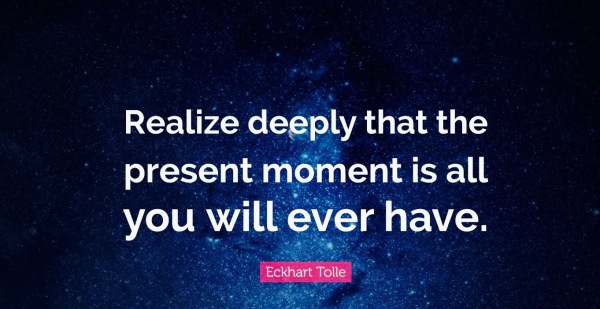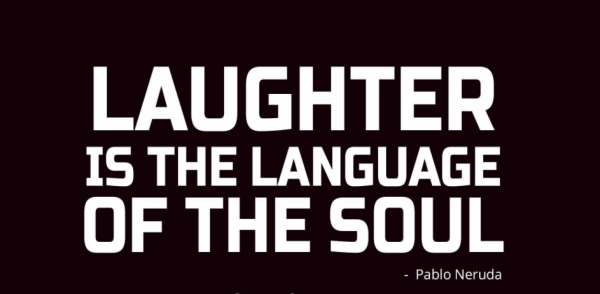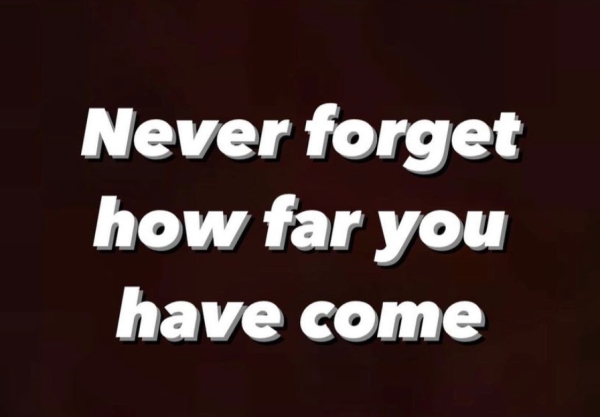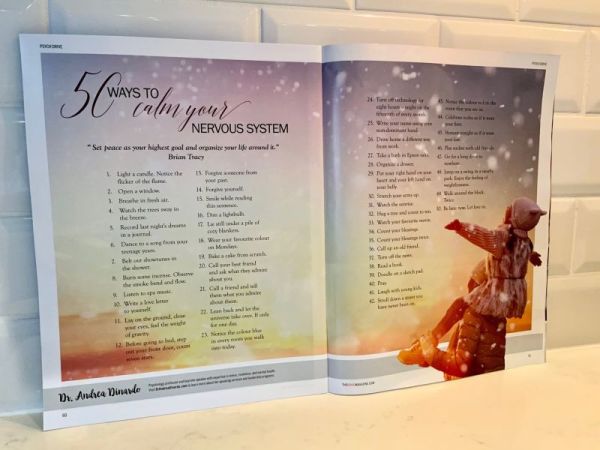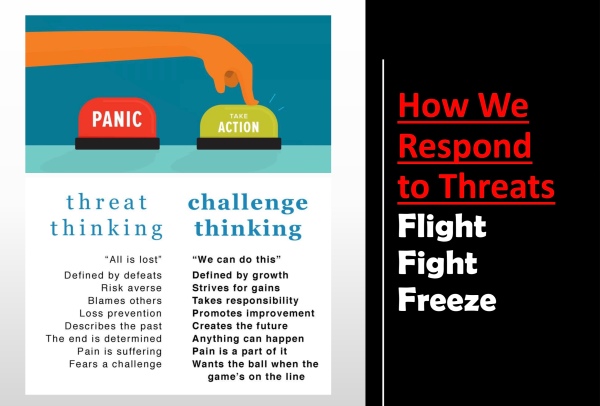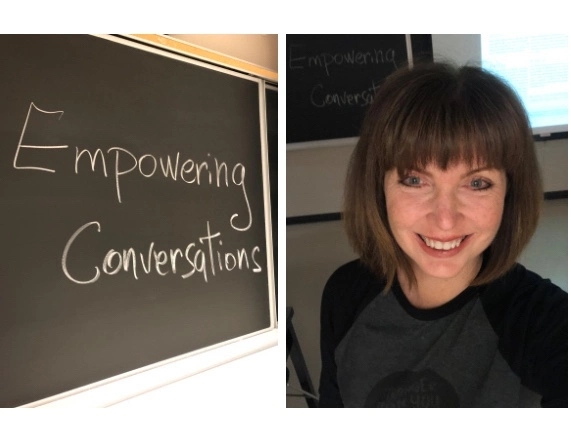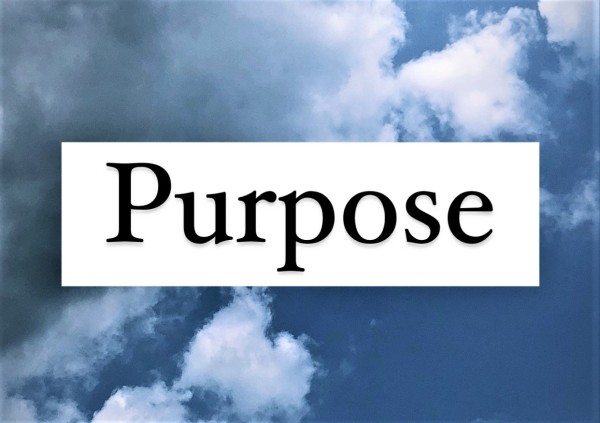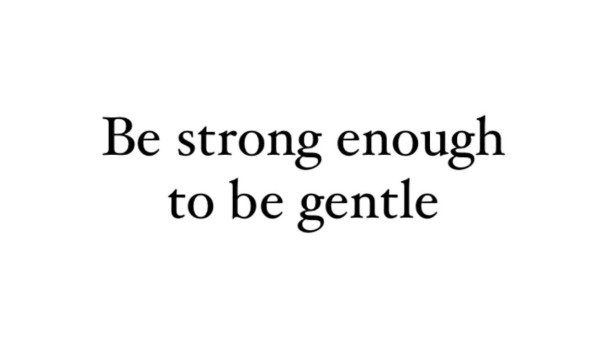https://youtube.com/shorts/tIKPb7edW_w?si=rJrQdgtgJ8SR9krs Do you find Christmas holidays stressful? If you’re anything like Santa, you answered yes! Santa feels the pressure too. Something I wrote about in the Drive Magazine . Including the benefits of leaning into difficult emotions. Because the more we resist discomfort, the longer it lasts. "The root of all suffering is attachment." Buddha https://youtu.be/JU1eYOWaleg?si=m1ItZDTBNHMoLdTN Stop... Continue Reading →
The Sweet Spot
https://youtu.be/fd9TrYI75o0?si=0gaSNLNAWVqWOAE8 The sweet spot is the moment in life when you realize you have arrived and the most interesting part is that you haven’t gone anywhere. Instead, you finally come home to the present moment. The here and now. The sweet spot. Nowhere else to be. But here and now. Right Here. Right Now. The... Continue Reading →
Laughter is the best medicine
https://m.youtube.com/watch?v=cFzHZ8JYVWk We live in a world weighed down by tragedy and adversity. And we have been conditioned to believe that tragedies require tragic mindsets and hardships demand hardened spirits. We also live in a world overflowing with abundance and joy. https://youtu.be/d4C0_7En6ZY But we cannot see the good from the bad when we are blinded by... Continue Reading →
Self-Talk That Lifts You Up
“Be mindful of your self-talk. It's your conversation with the universe.” As humans, we can’t help but look to the next rung on the ladder. Forgetting the 100 rungs we have already climbed. https://youtu.be/1ALCrzw_1Xo Today’s Psychology Challenge Take note of the trail behind you. The hard work. The success. The heartbreak. The soul awakenings. The... Continue Reading →
50 Ways to Calm Your Nervous System
https://youtu.be/MXd_bZn1lqo 50 Calming Exercises Light a candle. Notice the flicker of the flame. Open a window. Watch the trees sway in the breeze. Breathe in fresh air. Record last night’s dreams in a journal. Smile while reading this sentence. Dance to a song from your teenage years. Belt out show tunes in the shower. Burn... Continue Reading →
Peace Lives Here
Peace happens in moments. Not days. Not weeks. Not years. Hot coffee. Cozy blankets. Birds singing. The sun rising. https://youtu.be/tNXR9hCHZoc?si=lNaH-DE2kxo60oYe Peace happens in moments. Not days. Not weeks. Not years. Savour the sunshine. Taste every morsel. Dance with abandon. Stroll by the moonlight. Peace happens in moments. Not days. Not weeks. Not years. https://youtu.be/zRSQw-LjU8k Breathe... Continue Reading →
Face Everything and Rise
Fight or Flight Threat Response Every time we feel threatened (threat is the fundamental definition of stress) our first instinct is to “fight or flight“. This perpetual “fight or flight” response loop eventually creates a host of secondary problems, above and beyond, the original stressor. Powerpoint Slide from Broaden and Build Leadership Event, January 2022... Continue Reading →
Twelve Days of Self-Care
I am a strong believer in keeping things simple. The less complicated things are, the more likely we are to repeat the behaviour. Especially when it comes to health and happiness habits. https://youtu.be/0i0tuqAmdaw Twelve Days Day 1: Mindful Mornings Add five to ten minutes of relaxation to each of your morning routines. Time expands when... Continue Reading →
Honour Your Limits
Today’s Reminder That You Are Human Honour Your Limits. In every area of your life. It’s not a race. It’s a lifetime. Pace Yourself The world needs what you have to give — long-term. In every area of your life. It’s not a race. It’s a lifetime. https://youtu.be/RK7EzyPXRPA
Empowering Conversations About Change
The Psychology of Change During this week’s health psychology lecture, we talked about the psychology of change, including the parts of our lives that remain ‘unchanged’ during rapid and unexpected change. What Remains During Change? The Sun Still Rises Coffee Tastes Delicious Trees Greet You on Your Walk Favourite Movie Still Delights Bed is Comfie... Continue Reading →
What’s my purpose?
What's your perspective on purpose? Is it something you do or something you are? Is it ignited at birth? Or at work? Does it expire at death? Or when you retire? https://youtu.be/0WA8LzF5m3Y The way I see it. Purpose is for a lifetime. It's what lights you up, and sets your soul on fire! Video of... Continue Reading →
5 Mindfulness Techniques
1. Be Here Now https://m.youtube.com/watch?v=EiuTpeu5xQc&feature=emb_title Stop Take a breath Observe Proceed 2. Create Space https://m.youtube.com/watch?v=fXNo7GUDizM “Between stimulus and response there is a space. In that space is our power to choose our response. In our response lies our freedom.” Viktor Frankl 3. Find Your Flow https://youtu.be/mZ_bI_t_L_E In psychology, flow, also known as being in the... Continue Reading →
Let Your North Star Guide You
Mindfulness Tip: Look Up The sky connects us to something bigger than ourselves. Challenges appear small in comparison to the vastness of the sky. Solutions seem plausible. Answers come more easily. In the presence of stars, we embrace the profound and surrender it all. https://www.youtube.com/watch?v=0gMq9BNKvOA
2020 Life Lessons: Be Strong Enough To Be Gentle
Lockdowns have us spending a lot of extra time with the ones we love. Especially during the holidays. And if you’re anything like our household, it requires a whole new level of relationship skills. A deeper level of empathy and compassion for the pressures of the people we are living with. Helpful Tips: Psychology Today... Continue Reading →
Catch Pause Repair (CPR): Healthy Workplace Awards Keynote Speech
https://www.youtube.com/watch?v=8VvwITnvrhs Healthy Workplace Awards This week I did a keynote speech at the Healthy Workplace Awards Ceremony. Given all we are collectively going through, I thought the notes and video from the keynote would be helpful to everyone. News Release: CTV News Especially as we wrap up this year. A year where we collectively experienced... Continue Reading →
Shine your light
https://youtu.be/pjxCsK2qudw?si=xHsV_IBAKQq47am2 I used to think of life purpose as some great big grand scheme for life, something we spend our whole life chasing after. Daunting for sure. At times overwhelming. Then one day I realized that life purpose was a series of small, fleeting events, rather than one great big span of life. Bite size... Continue Reading →
Enjoy Every Moment
https://www.youtube.com/watch?v=fd9TrYI75o0 Never let the things you want make you forget the things you already have. Nothing Lasts Forever. Good or Bad. Enjoy Every Moment. Embrace it. Be it. See it. Everything you appreciate is you reflecting back. Homework for Today Look Around You. Notice Things Like You Are Seeing Them for the Very First Time.... Continue Reading →
Anger is a sign that something needs to change
Individuals are often looking for healthier ways to express their emotions. For Example: Anger That said, it's not as simple as becoming "more calm" or "less explosive". The first step in transformation and lasting change is looking below the surface. The Kübler-Ross Model provides insight: The goal is to discover if angry thoughts, actions, or... Continue Reading →
Compassionate Listening
Even as a psychologist, I often don’t know what to say. Especially now with so many people experiencing pain and trauma in escalating ways. So rather than assume what someone needs, I have learned over the years to ask one simple question: How Can I Support You? In doing so, I create a safe space... Continue Reading →
Psychology Insights: Self Criticism to Self Compassion
WHY ARE WE SO HARD ON OURSELVES? Great question! One that I’m asked often. And one that I often ask myself. PSYCHOLOGY INSIGHTSWhat causes this behaviour? The answer is multifaceted and includes several factors including how we were parented (when internalized superego and conscience first develops) and eventually how we parent ourselves. For example: When something... Continue Reading →
Rethink Time in COVID-19
I find the perception of time fascinating.Everyone experiences time differently. Because time truly is relative. Changing from situation to situation.For example: Work Week vs. Vacation Week COVID vs. Pre-COVID Bored versus in Flow Time perception also varies from person to person. For example: Teenager vs. Baby Boomer Good Health vs. Poor Health Type A Personality... Continue Reading →
Acceptance: Your Peace Depends on It
Acceptance and peace go hand in hand. Watch Video — Click Here Consciously accept the good and the bad that exists in your life. The rain and the sunlight. The shadow and the light. Shift your focus. Change your life. Accepting what is does not lower the bar. Quite the opposite. Acceptance shines a spotlight on... Continue Reading →
Let Your North Star Guide You
My Wish For You Today May you find peace in your home. And calm in your heart. No matter the storm. Psychology Thought for the Day The goal isn’t to get rid of all our negative thoughts and emotions. The goal is to change our response to them. To accept them without judgement. To transcend... Continue Reading →
Breathe
https://m.youtube.com/watch?v=zRSQw-LjU8k Every time we take a long deep breath, we are telling our bodies that we are safe. Each breath connecting our mind, body, and heart. Bringing us back to present time. 5 Breathing Techniques: Follow Your Breath Become aware of each inhalation and exhalation. Focus on the sensations you feel as air passes through... Continue Reading →
Celebrate how far you’ve come.
Today let’s celebrate all the dreams that came true. Merely an idea 5 years ago. It is so easy to get lost in our hopes and motivations for the future. Without realizing how many of aspirations we have already achieved. Together let’s honour how far we’ve come. Only then will we have the fuel and... Continue Reading →
Mindful Moments in California
We’re on a trip to California for our December birthdays and wedding anniversary and I couldn’t imagine a more mindful place to be. Nature everywhere we look. Luminous moonlight. Dancing campfire. Fresh ocean air. Water as far as the eye can see. Sunshine in every nook. 100 year old fig trees. Just outside our hotel... Continue Reading →
CPR: Catch Pause Repair
https://www.youtube.com/watch?v=KVfeKg78fEY Catch Pause Repair (CPR) is a Framework for Sustainable Mental Health & Resilience Habits. CPR includes three simple steps as outlined in the video. 1. Catch Catch yourself before a stress response escalates by becoming more aware of what triggers you. 2. Pause Pause and take a 60 second time out when you feel... Continue Reading →
5 Simple Stress Relief Techniques
Life is complicated. Stress management shouldn't be. 5 Stress Relief Techniques 1. Gratitude https://m.youtube.com/watch?v=gXDMoiEkyuQ 2. Breathwork https://m.youtube.com/watch?v=zRSQw-LjU8k 3. Movement https://m.youtube.com/watch?v=d4SyONPkus0 4. sur·ren·der https://youtu.be/I7YD4A900-4 5. This moment https://youtu.be/moc-AtmSSGU Repeat Daily 💕
Happiness and Healing in Present Time.
You have the ability to make positive changes in your life. Right here. Right now. Don’t wait for “the perfect time” to transform your life. NOW IS YOUR POWER.
5 Ways to Focus Better
Why Can't I Remember Anything? One of the most frequent questions I was asked as a practicing psychologist and more recently as a psychology professor is why can't I remember anything. The problem is most likely a focusing issue — not a memory issue. An important distinction between memory and attention that I share in... Continue Reading →
FOMO ANXIETY Simple Tips for Feeling Better
This post is for anyone experiencing FOMO. Particularly on a long weekend holiday! https://m.youtube.com/watch?v=I2P5VhC-Ih8 Psychology Insight: Holidays heighten social anxiety of every kind. FOMO especially. Consider these questions as you explore what’s going on below the surface. 1. Do you remember the first time you experienced FOMO? 2. How did you cope with the anxiety... Continue Reading →
Finding the light.
How do you start the day? Do your morning routines lighten you up? Or bring you down? Early morning rituals spark the divine in me. No matter the day. No matter the moment. Angel cards, hot coffee, and mindfulness take me there. Fueling my creativity. Illuminating my path. Shifting me higher. Today’s Angel Reading —... Continue Reading →
The Happiness Class
Reflections on Happiness One of my favourite things to do as a professor is to stay after class and talk to students about what hit home for them about each week’s lecture. Fresh Perspective Students look at the world in a very unique way. Motivating me to think about psychology at a whole different level.... Continue Reading →
Your emotions have a message for you.
Create space for feelings to flow. Emotions are neither good or bad. Only labeling makes it so. Don't run from challenging emotions. Instead, lean in and ask: “What are you trying to tell me?" Witness. Observe. Learn. https://www.youtube.com/watch?v=jQKomXhKKbE&t=29s The best part is how small fear appears close up! We must go in — to get... Continue Reading →
What brings you joy?
What brings you joy on a Saturday morning, Friday night, or Tuesday afternoon? From my experience, it’s never the time, the day, or the month that brings good vibes. It’s how we feel on the inside. So why wait another minute for happy hour. Create the life you want wherever you are. 😊😊 Related Post: Happiness in Present... Continue Reading →
Manage energy not time. Positive energy multiplies.
https://m.youtube.com/watch?v=l9ZS9KiA6uQ This was my first video blog (vlog) ever! (Filmed July 2018) I was equal parts terrified and excited. Hence the breathlessness. Upside: I had a blast filming it
Taming Your Monkey Mind
Nature is a beautiful way to stop the monkey mind in its’ tracks. What is the monkey mind? “Buddha described the human mind as being filled with drunken monkeys, jumping around, screeching, chattering, carrying on endlessly. Fear is an especially loud monkey - screaming out all the things that could go wrong.” Source: HuffPost When we’re caught... Continue Reading →
Happiness in Present Time
“The art of being happy lies in the power of extracting happiness from common things.” Our left brain lives in the past and the future. Our right brain lives in the here and now. One scrambles for solutions to problem after problem. The other sinks into the present moment, trusting all is well. Which side... Continue Reading →
What you seek is seeking you.
As we head into the weekend, may we all be reminded of the importance of rest in striving for success. If only for a moment. An hour or a day. Be still and let your dreams find you. https://www.youtube.com/watch?v=6mDigR8RVXU “What you seek is seeking you”. You hold the key. Breathe. Believe. Receive.
The deeper the breath, the deeper the peace.
The next time you are under any kind of pressure. Stuck in traffic. Rushing from class to class. Dealing with a difficult customer at work. Desperately trying to recall answers on a final exam. Wake up to the formidable power that exists within you. Right here. Right now. Right under your nose. Breathe https://youtu.be/zRSQw-LjU8k The deeper the breath, the deeper... Continue Reading →
Breathing Space.
Look up ↑ Breathe ↑ Release One quick glance to inner peace. Related Post: Always Looking Up.
Reading People: Lesson #1 Self Awareness
"The simple act of paying attention can take you a long, long way." Intrapersonal Intelligence ⇔ Interpersonal Intelligence The first lesson in reading people, using the principles of emotional intelligence, is to understand yourself more deeply. What motivates you. What excites you. What angers you. What lifts you up! As self-awareness is essential for both... Continue Reading →
Gratitude changes everything
When problems feel big. Savour the small. The secret to having it all is knowing that you already do. Related Post: The Sweet Spot
Here I am.
The aftermath. No matter how many times I give a speech or participate in a big event, I am often left with the same feeling for a day or so. Sadness. A kind of longing. A sense of emptiness. For weeks, sometimes months, I practice, prepare, and edit my work. Immersed, focused, lost in the creative... Continue Reading →
Ordinary Joys
Simple pleasures are my favourite. Hot coffee. Cozy blankets. Birds singing. The sun rising. Fast runs. Slow walks. Long days. Warm hugs. Peaceful silences. BLT sandwiches. Tomato soup. Matinee movies. Buttery popcorn. Ice cold pop. Walking on campus. Smiling in the hallways. Laughing with students. Learning from students. Driving home. Soulful conversations. Dreaming of the future. Reminiscing about... Continue Reading →
Less fight. More serenity.
The next time you’re gearing up for another big fight with reality. Morning Traffic Office Politics Loud Neighbours Unpredictable Weather Try rolling with it. Giving up the fight. Waving the white flag. Surrendering to what is. And always has been. The upside. You conserve energy for the joyful in your life. The meaningful in your... Continue Reading →
Breathe and Receive.
When I'm struggling to get through a difficult day, I look to the trees for inspiration and refuge. All they do is give. And all we need to do is receive. Again and again. With every single breath. And every single step. Peace lives here.
The key to happiness
Let go of what is outside your control. The next time you are gearing up for another fight with reality. Winter; Traffic; Parking; Deadlines. Try rolling with it. Surrendering to what is. Letting go. No matter the circumstances. Hold on to what brings you joy. In surrendering, you save precious energy for the joyful in your... Continue Reading →
Work hard. Rest. Repeat.
TO ALL NURSING STUDENTS Including students from all walks of life! If I were to assign any homework this week it would be to take a break. 10 minutes at a time. 5 times a day. Because you have all worked exceptionally hard the past five weeks. And a good rest is half the work.... Continue Reading →
Study Tip: Stay Focused
This post was inspired by the one question students ask year after year: "Why Can't I Remember Anything?" More often than not, it's a focusing and attention issue, not a memory problem. Atkinson–Shiffrin Memory Model An important distinction between attention and memory described in the video below: https://www.youtube.com/watch?v=AVLM9VWCkeU Stay Focused You Can't Do Big Things... Continue Reading →


